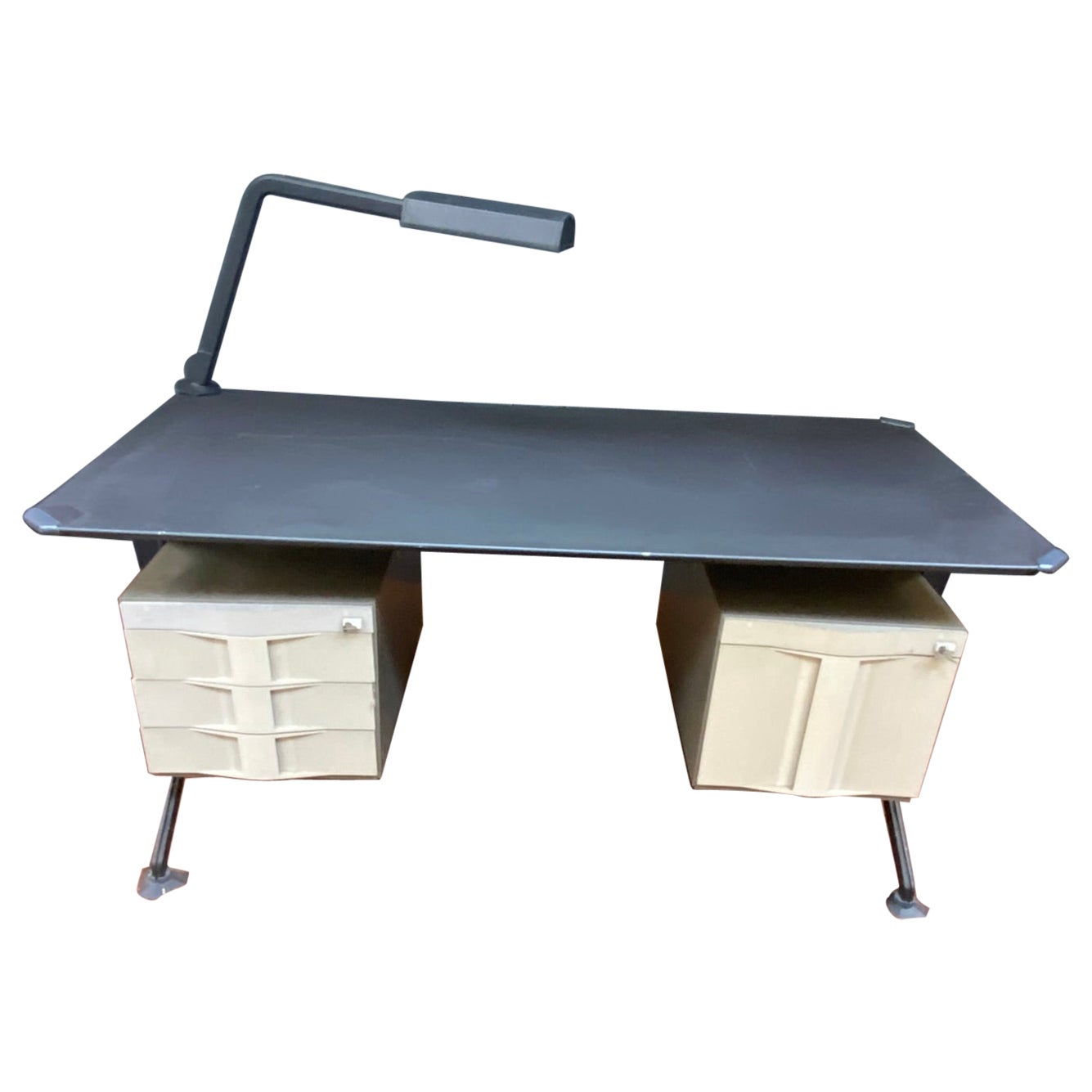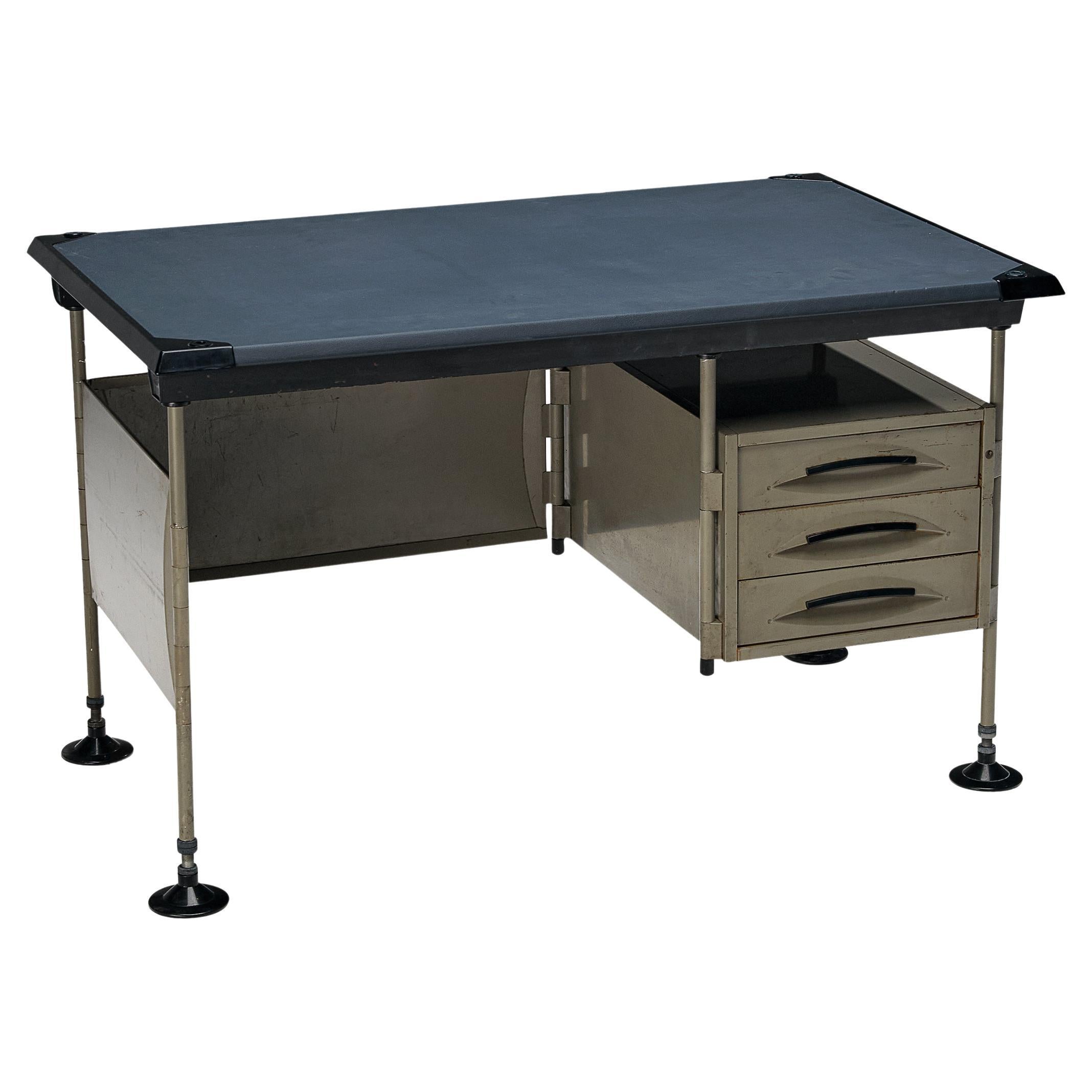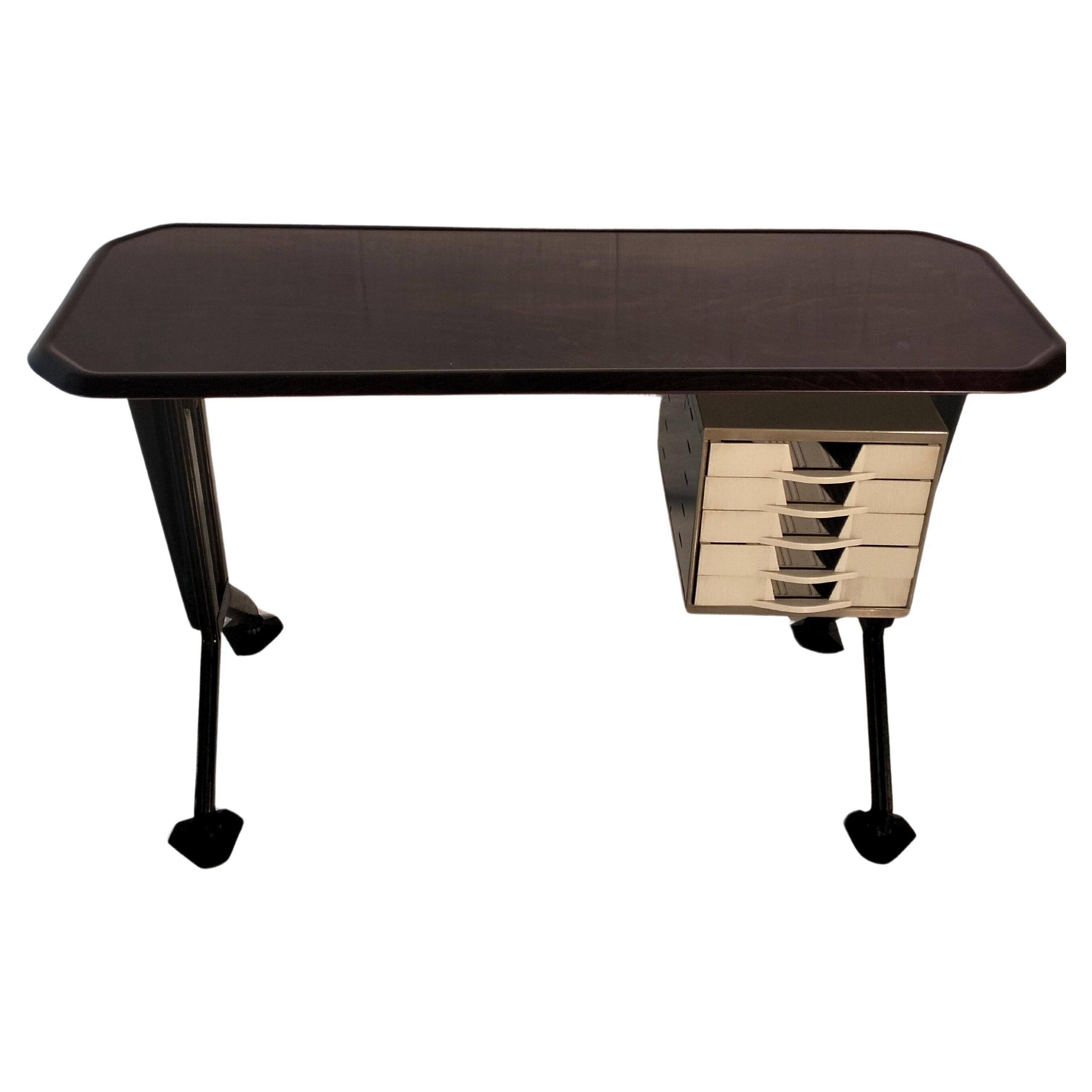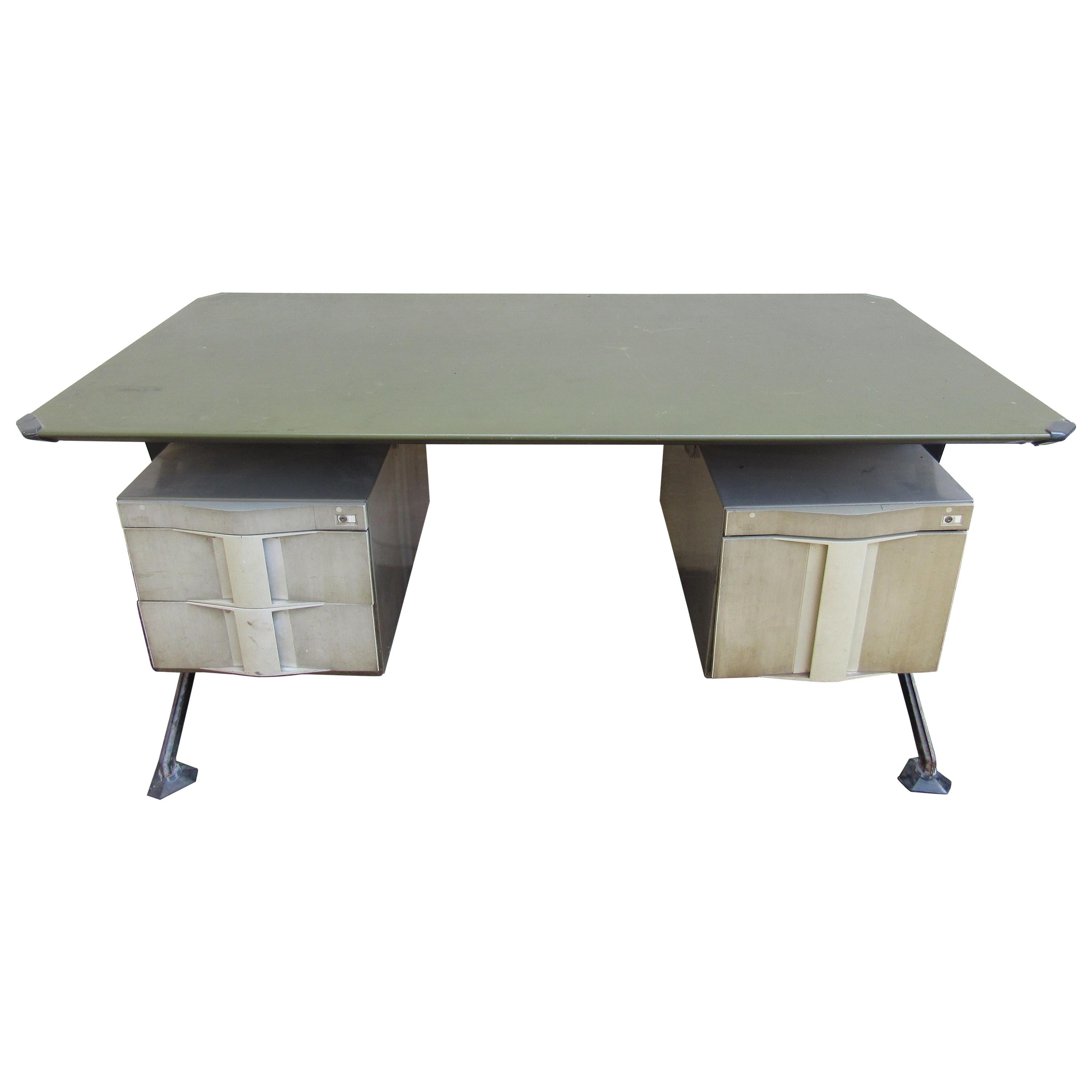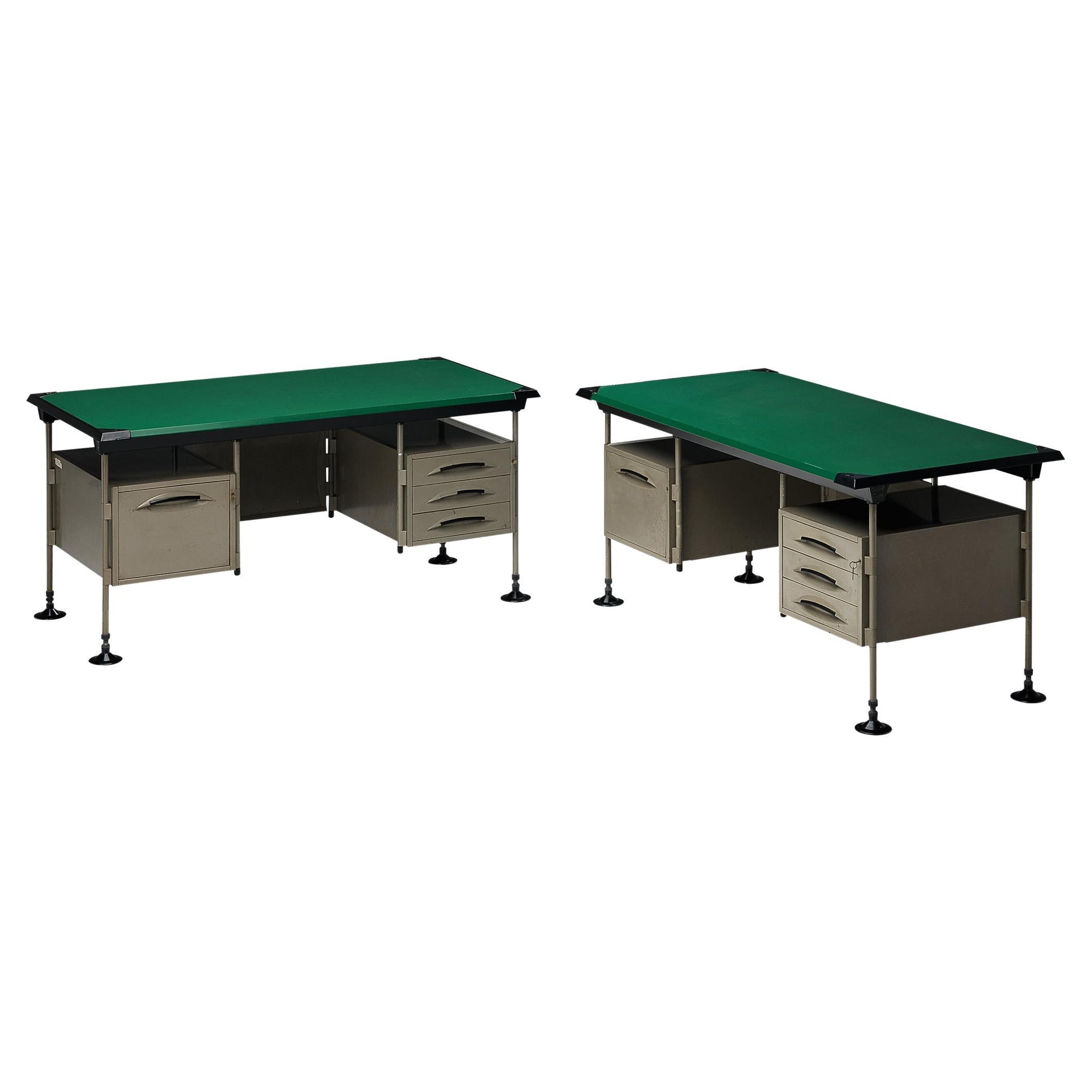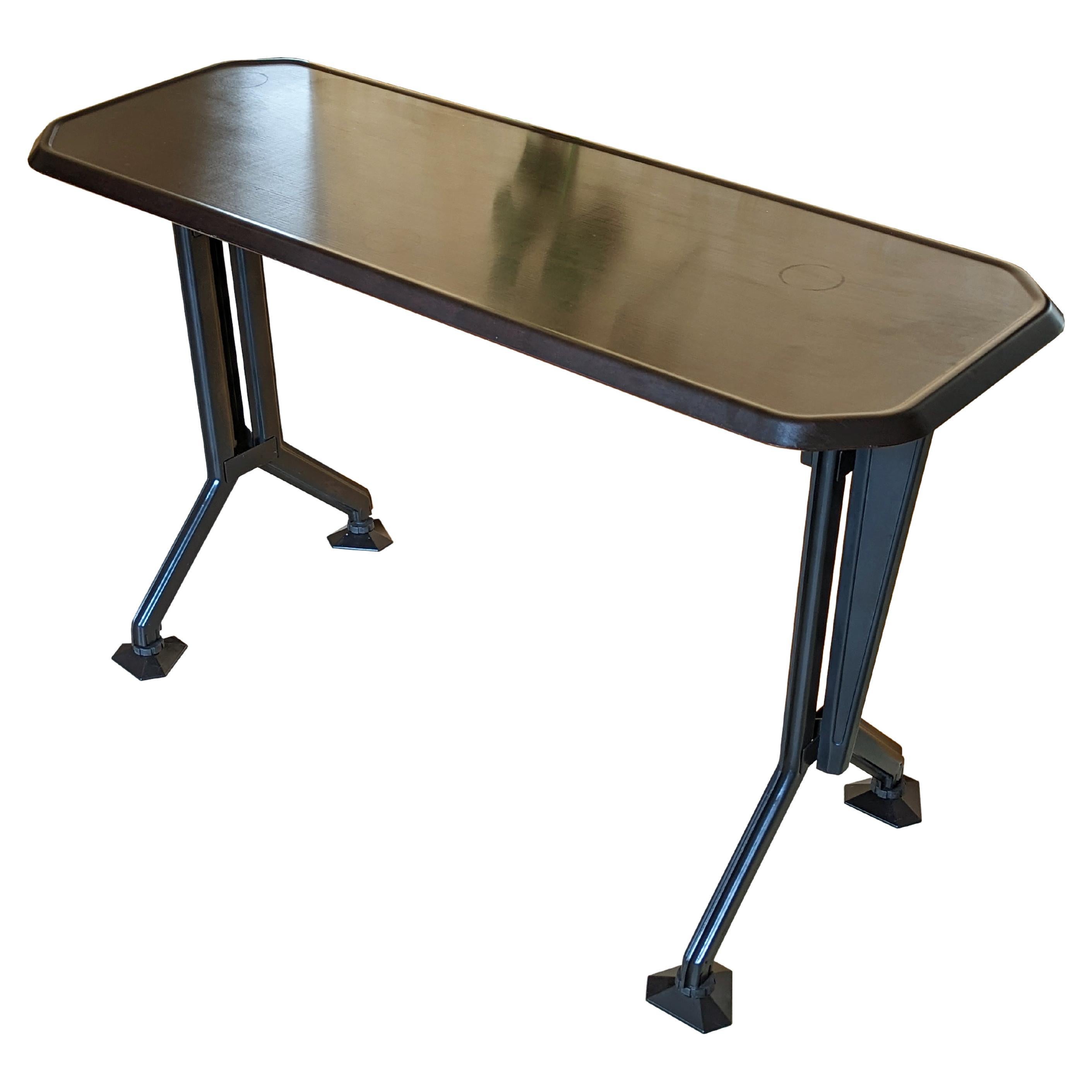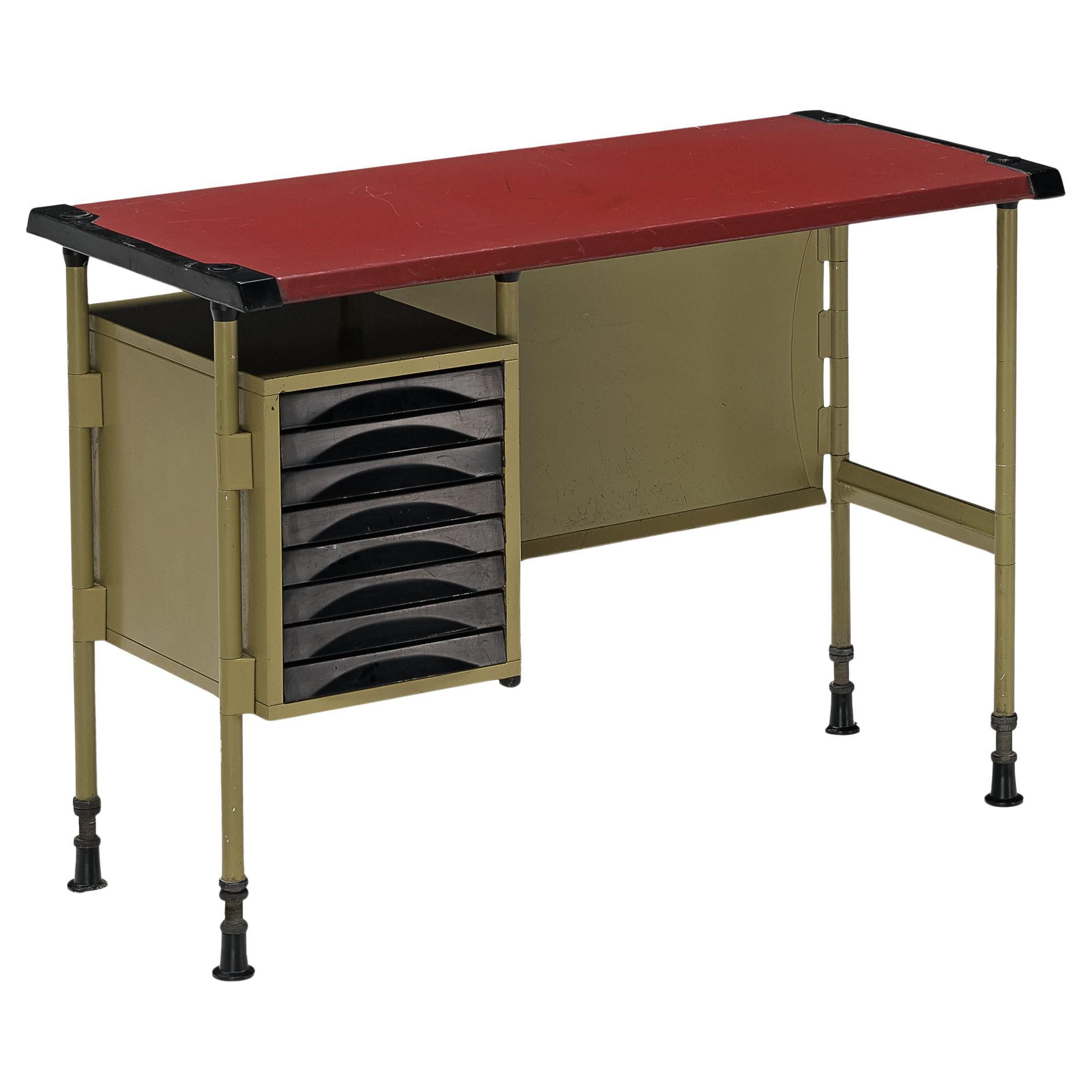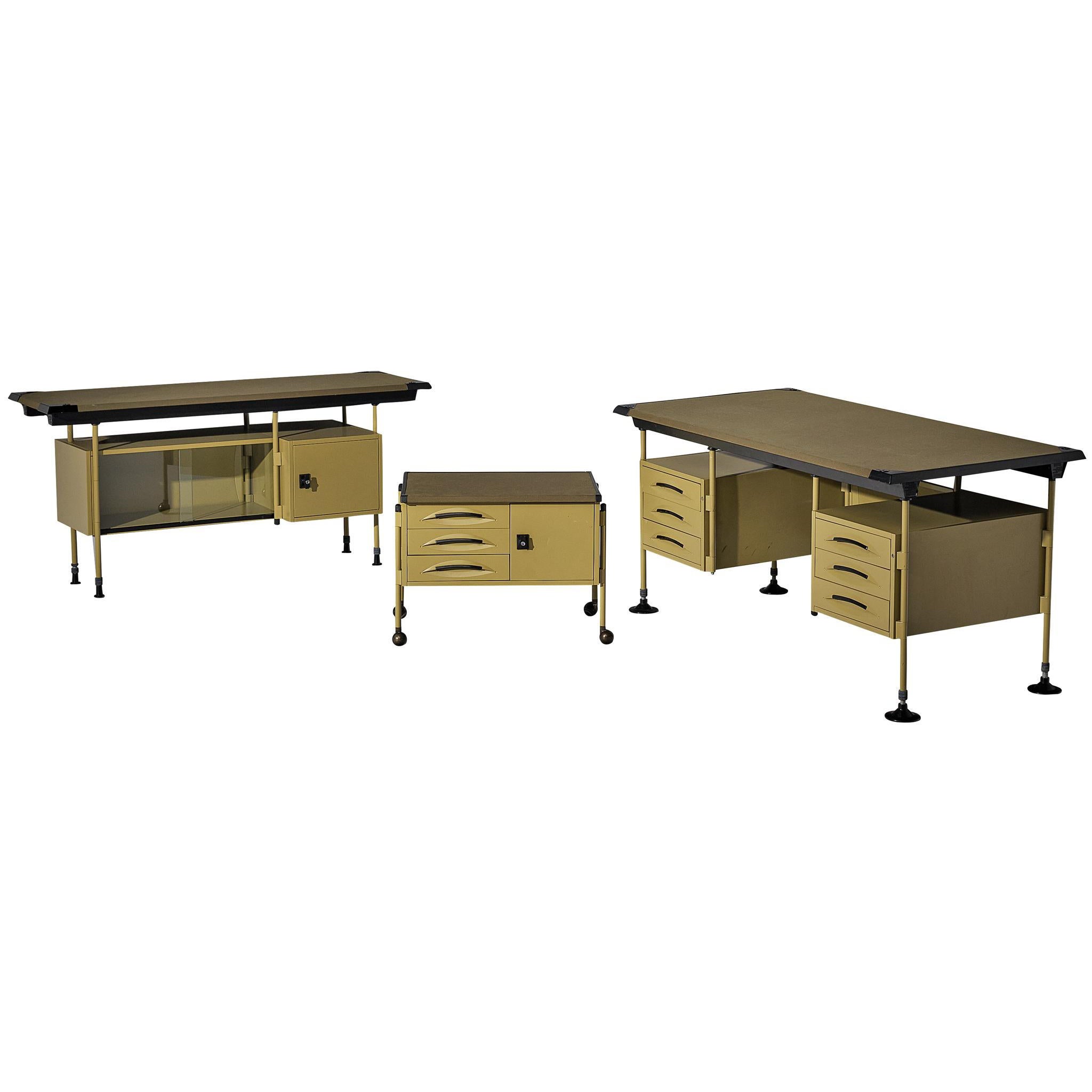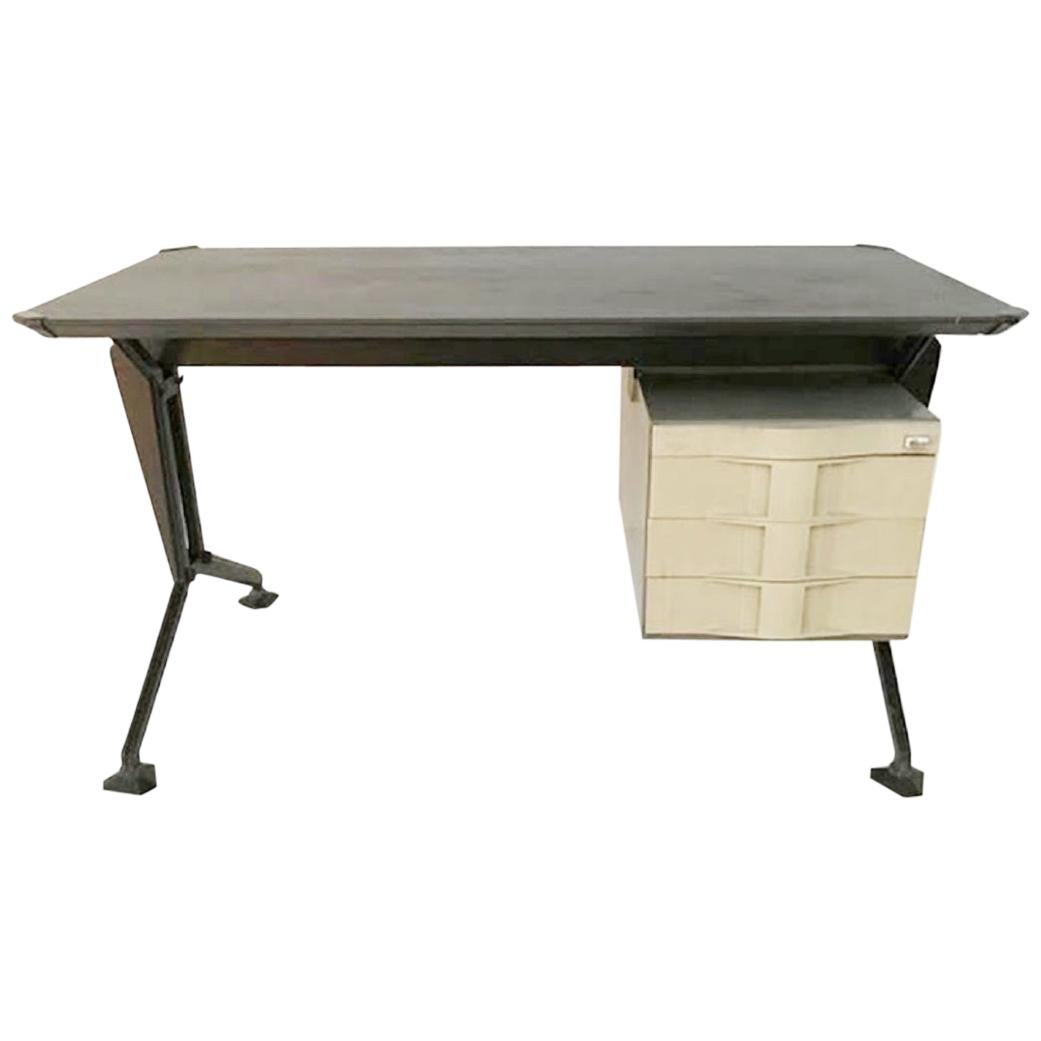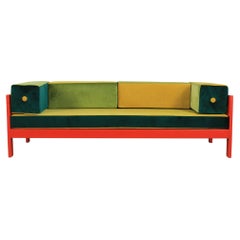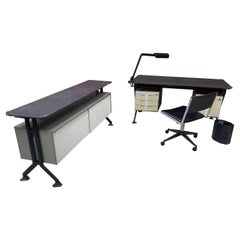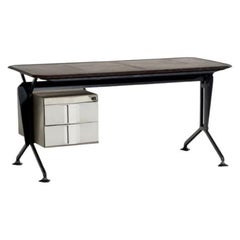
Studio BBPR Arco Writing Desk in Metal and Wood for Olivetti Synthesis 1960s
View Similar Items
Want more images or videos?
Request additional images or videos from the seller
1 of 7
Studio BBPR Arco Writing Desk in Metal and Wood for Olivetti Synthesis 1960s
About the Item
- Creator:Studio BBPR (Designer),Olivetti (Manufacturer)
- Dimensions:Height: 31.5 in (80 cm)Width: 63 in (160 cm)Depth: 30.71 in (78 cm)
- Style:Post-Modern (Of the Period)
- Materials and Techniques:
- Place of Origin:
- Period:
- Date of Manufacture:1960s
- Condition:Wear consistent with age and use.
- Seller Location:Montecatini Terme, IT
- Reference Number:1stDibs: LU5304225693672
About the Seller
4.9
Platinum Seller
These expertly vetted sellers are 1stDibs' most experienced sellers and are rated highest by our customers.
1stDibs seller since 2020
103 sales on 1stDibs
More From This SellerView All
- Ettore Sottsass Califfo Sofa in Wood and Multicoloured Velvet Poltronova 1960sBy Ettore Sottsass, PoltronovaLocated in Montecatini Terme, ITTwo-seater Califfo sofa with a structure in a orange/red lacquered wood seat and back are structured by cushions upholstered with velvet fabric in a mixed...Category
Vintage 1960s Italian Post-Modern Sofas
MaterialsFabric, Wood, Velvet
- Ettore Sottsass Canada Armchair in Blue Velvet and Wood Poltronova 1960sBy Ettore Sottsass, PoltronovaLocated in Montecatini Terme, ITCanada settee armchair with a structure in wood, seat and back in padded blue-green velvet. It was designed by Ettore Sottsass Jr in 1959 and produced by the Italian company Poltro...Category
Vintage 1950s Italian Mid-Century Modern Armchairs
MaterialsVelvet, Wood
- Guido Faleschini Wardrobe in Brown Suede and Metal by I4Mariani 1960s ItalyBy i4 Mariani, Guido FaleschiniLocated in Montecatini Terme, ITWardrobe with suede clad panels, each panel is surrounded by a chromed steel frame and presents metal ring shape handles on the frontal part. This cabinet was designed by Guido Fale...Category
Vintage 1960s Italian Mid-Century Modern Wardrobes and Armoires
MaterialsMetal
- Angelo Ostuni and Renato Forti 399 Floor Lamp in Metal and Iron by Oluce 1960sBy Oluce, Angelo Ostuni, Renato FortiLocated in Montecatini Terme, ITFloor lamp model 399 (from cornalux series) with structure in nickel-plated metal, lacquered metal and cast iron. The lamp bulb is adjustable in height achieved by a bracket that allows the lamp to be slid up and down the lamp stem. This lamp was designed by the Italian duo formed by Angelo Ostuni & Renato Forti and manufactured by O-Luce in 1958. Measurements: H 141 x Ø 24 diameter (base 20cm). Founded in 1945 by Giuseppe Ostuni, Oluce is the oldest Italian design company still operating in the lighting world, a unique production excellence which translates passionate aesthetic and technological research into the potential of light into actual form. Over the years, Oluce has succeeded in building a collection structured like a tale, rich and multifaceted, inhabited by products that transcend fashion to become Italian design icons. Its relationship with the design world begins In 1951, Oluce successfully took part in the IX Triennale, presenting – in the lighting section curated by Achille, Livio and Pier Giacomo Castiglioni – a Luminator designed by Franco Buzzi. As was typical at that time, the company instantly gained visibility on the international panorama thanks to Domus magazine. Major success was then reasserted by Tito Agnoli with nominations at the second edition of the Compasso d’Oro awards, in 1955, for his two lamps (the 363 floor lamp and a special bookshelf model). In 1956 these were followed in rapid succession by two more nominations: one for a remarkable table lamp in polyvinyl slats and another for a pendant lamp (mod. 4461) with double perspex shade. Then, there was the noteworthy 255/387 lamp (known as ”Agnoli”), a spot light supported...Category
Vintage 1960s Italian Mid-Century Modern Floor Lamps
MaterialsMetal, Iron
- Gio Ponti Ninfea Folding Chairs in Wood and White Fabric by Reguitti 1960s ItalyBy Fratelli Reguitti, Gio PontiLocated in Montecatini Terme, ITA Ninfea (or Pieghevole Ninfea) folding lounge chair with a structure in the wood, seat, and back in woven white fabric and brass hinges. The Ninfea chair...Category
Vintage 1960s Italian Mid-Century Modern Chairs
MaterialsBrass
- Franco Albini TL30 Round Table in Metal and Wood for Poggi Pavia 1950s ItalyBy Franco Albini, PoggiLocated in Montecatini Terme, ITRound table model TL30 with black lacquered metal base and a wooden top. Designed by Franco Albini for Poggi, Pavia in 1950s. After spending his childhood and part of his youth in Robbiate in Brianza, where he was born in 1905, Franco Albini moved with his family to Milan. Here he enrolled in the Faculty of Architecture of the Polytechnic and graduated in 1929. He starts his professional activity in the studio of Gio Ponti and Emilio Lancia, with whom he collaborates for three years. He probably had his first international contacts here In those three years, the works carried out are admittedly of a twentieth-century imprint. It was the meeting with Edoardo Persico that marked a clear turning point towards rationalism and the rapprochement with the group of editors of “Casabella”. The new phase that that meeting provoked starts with the opening of the first professional studio in via Panizza with Renato Camus and Giancarlo Palanti. The group of architects began to deal with public housing by participating in the competition for the Baracca neighborhood in San Siro in 1932 and then creating the Ifacp neighborhoods: Fabio Filzi (1936/38), Gabriele D’Annunzio and Ettore Ponti (1939). Also in those years Albini worked on his first villa Pestarini. But it is above all in the context of the exhibitions that the Milanese master experiments his compromise between that “rigor and poetic fantasy” coining the elements that will be a recurring theme in all the declinations of his work – architecture, interiors, design pieces . The opening in 1933 of the new headquarters of the Triennale in Milan, in the Palazzo dell’Arte, becomes an important opportunity to express the strong innovative character of rationalist thought, a gym in which to freely experiment with new materials and new solutions, but above all a “method”. Together with Giancarlo Palanti, Albini on the occasion of the V Triennale di Milano sets up the steel structure house, for which he also designs the ‘furniture. At the subsequent Triennale of 1936, marked by the untimely death of Persico, together with a group of young designers gathered by Pagano in the previous edition of 1933, Franco Albini takes care of the preparation of the exhibition of the house, in which the furniture of three types of accommodation. The staging of Stanza per un uomo, at that same Triennale, allows us to understand the acute and ironic approach that is part of Albini, as a man and as a designer: the theme addressed is that of the existenzminimum and the reference of the project is to the fascist myth of the athletic and sporty man, but it is also a way to reflect on low-cost housing, the reduction of surfaces to a minimum and respect for the way of living. In that same year Albini and Romano designed the Ancient Italian Goldsmith’s Exhibition: vertical uprights, simple linear rods, design the space. A theme, that of the “flagpole”, which seems to be the center of the evolution of his production and creative process. The concept is reworked over time, with the technique of decomposition and recomposition typical of Albinian planning: in the setting up of the Scipio Exhibition and of contemporary drawings (1941) the tapered flagpoles, on which the paintings and display cases are hung, are supported by a grid of steel cables; in the Vanzetti stand (1942) they take on the V shape; in the Olivetti store in Paris (1956) the uprights in polished mahogany support the shelves for displaying typewriters and calculators. The reflection on this theme arises from the desire to interpret the architectural space, to read it through the use of a grid, to introduce the third dimension, the vertical one, while maintaining a sense of lightness and transparency. The flagpole is found, however, also in areas other than the exhibition ones. In the apartments he designed, it is used as a pivot on which the paintings can be suspended and rotated to allow different points of view, but at the same time as an element capable of dividing spaces. The Veliero bookcase...Category
Vintage 1950s Italian Mid-Century Modern Dining Room Tables
MaterialsMetal
You May Also Like
- Desk by BBPR for Olivetti Synthesis, circa 1960By Studio BBPR, OlivettiLocated in Saint-Ouen, FRdesk and his lamp by BBPR for Olivetti Synthesis, circa 1960 The keys are present, some scratches on the board.Category
Vintage 1960s Italian Mid-Century Modern Desks and Writing Tables
MaterialsMetal
$4,175 / set - Rare Desk Set by BBPR for Olivetti Synthesis, circa 1960By Studio BBPR, OlivettiLocated in Saint-Ouen, FRRare desk set by BBPR for Olivetti Synthesis, including a desk, a storage unit, an office chair, a lamp and a wastepaper basket storage unit: 76 x ...Category
Vintage 1960s Italian Mid-Century Modern Desks and Writing Tables
MaterialsMetal
- Studio BBPR for Olivetti Spazio DeskBy Studio BBPR, OlivettiLocated in Waalwijk, NLStudio B.B.P.R. for Olivetti, 'Spazio' desk with drawers, metal, vinyl, plastic, Italy, circa 1960 This industrial 'Spazio' desk is designed by Studio B.B.P.R. A black vinyl tablet...Category
Vintage 1960s Italian Mid-Century Modern Desks and Writing Tables
MaterialsMetal
- Arco Series Typing Desk by BBPR for Olivetti Synthesis 60s, 70sBy OlivettiLocated in Padova, ITDesk designed in the 1960s by Studio BBPR for Olivetti Synthesis. The desk is complete with a five-drawer chest of drawers. Iconic office furniture that holds a prominent place in the history of design. BBPR was the acronym that indicated the group of Italian architects established in 1932 by Gian Luigi...Category
Vintage 1960s Italian Mid-Century Modern Desks and Writing Tables
MaterialsMetal
- Midcentury Italian Arco Desk by BBPR for Olivetti SynthesisBy Studio BBPR, OlivettiLocated in Brooklyn, NYThis impressive vintage modern desk boasts a floating top covered in faux textured leather. A stunning Italian Industrial Design that looks amazing in any setting. The metal frame ha...Category
Vintage 1960s Italian Mid-Century Modern Desks
MaterialsMetal
$1,750 Sale Price30% Off - Studio BBPR for Olivetti 'Spazio' Desks in Grey Coated SteelBy Studio BBPR, OlivettiLocated in Waalwijk, NLStudio BBPR for Olivetti, 'Spazio' writing desks, coated steel, plastic, vinyl, Italy, design 1959/60, production 1960s In 1954, Olivetti, the Italian office equipment manufacturer...Category
Vintage 1960s Italian Mid-Century Modern Desks and Writing Tables
MaterialsSteel
